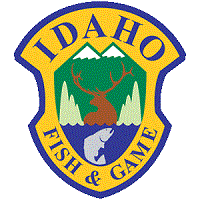What Idaho Waterfowl Hunters Can Expect This Year
Idaho Department of Fish and Game 10.23.13

Hunters in the waterfowl blinds this season can expect to see a fall flight similar to last year’s.
Continental waterfowl populations are strong, and habitat conditions have been above average in the Canadian provinces where Idaho’s birds are produced.
Mallards are by far the most abundant ducks in hunters’ bags in Idaho. And more than 60 percent of the mallards harvested here come from Alberta, the Northwest Territories, British Columbia and Alaska.
Despite a delayed spring over most of the survey area, habitat conditions during the 2013 Waterfowl Breeding Population and Habitat Survey were improved or similar to last year in many areas because of average or above average annual precipitation.
The estimated mallard abundance was 10.4 million, similar to the 2012 estimate, which is 36 percent above the long-term average. Population estimates for wigeon, green-winged teal, gadwalls and common goldeneyes – also commonly taken in Idaho – were similar to or above 2012 estimates in 2013.
In the traditional survey area, the total duck population estimate was about 45.6 million birds – a 6 percent decrease from last year’s estimate of about 48.6 million. But it is still 33 percent higher than the long-term average from 1955 through 2012.
The total duck estimates in:
- Southern Alberta and southern Manitoba – similar to last year’s and the long-term average.
- Southern Saskatchewan – 8 percent higher than last year and 61 percent above the long-term average.
- Central and northern Alberta, northeastern British Columbia, and the Northwest Territories – similar to last year’s and 16 percent above the long-term average.
- Northern Saskatchewan-northern Manitoba-western Ontario survey – 25 percent higher than the 2012 estimate and similar to the long-term average.
- Alaska-Yukon Territory-Old Crow Flats region – 26 percent lower than last year, and 11 percent below the long-term average.
In 2012, about 16,200 duck hunters spent a collective 120,700 days in the field, and harvested 351,600 ducks. This was a 68 percent increase in harvest from 2011 and well above the long-term average of 235,600 ducks.
Hunters also harvested about 72,600 Canada geese in 2012. This was a 44 percent increase from 2011 and above the long-term average of 64,900 geese.
All of that bodes well for waterfowl hunters. But of course, weather patterns tend to drive when and where waterfowl arrive from the north here in Idaho. So be ready, have fun and shoot straight!

